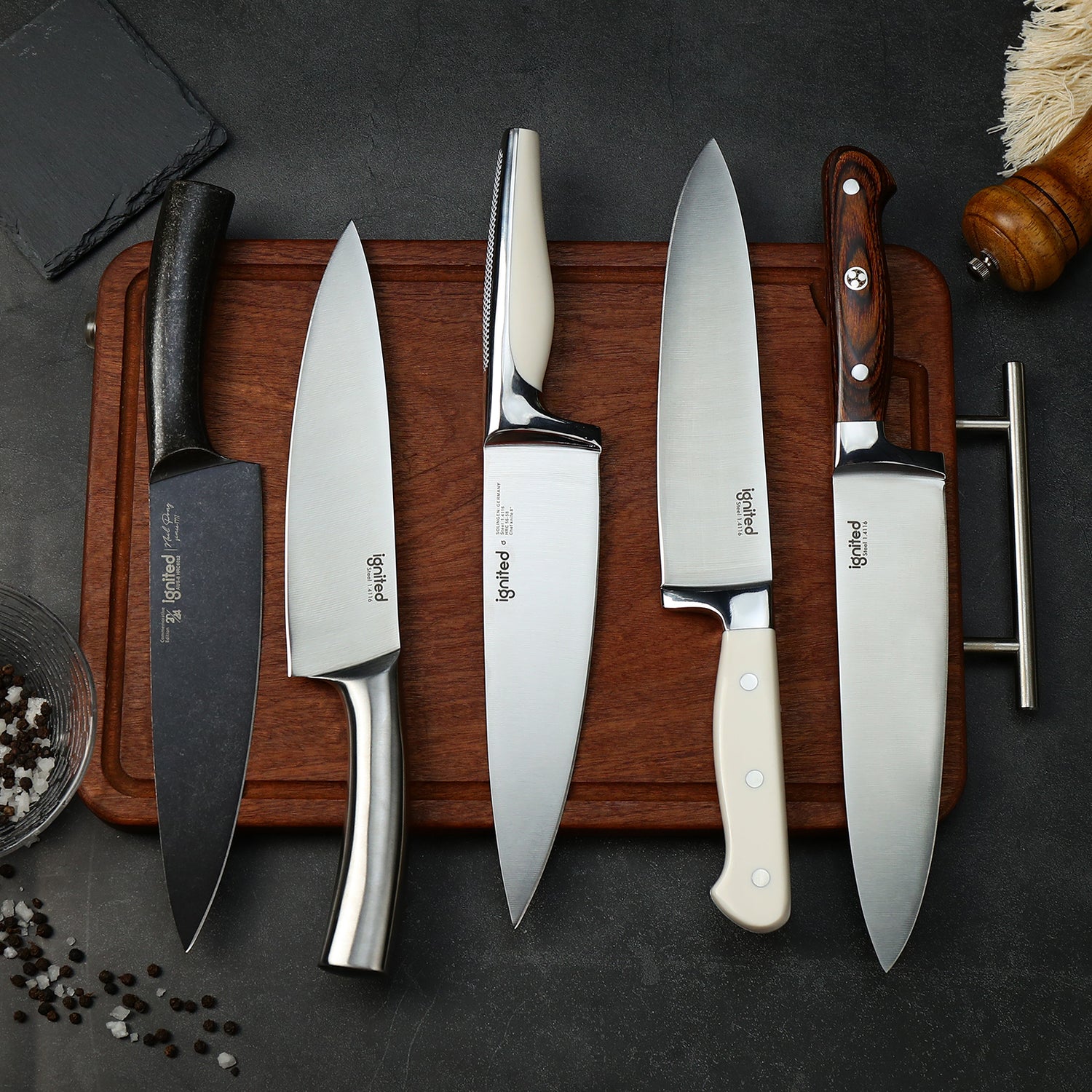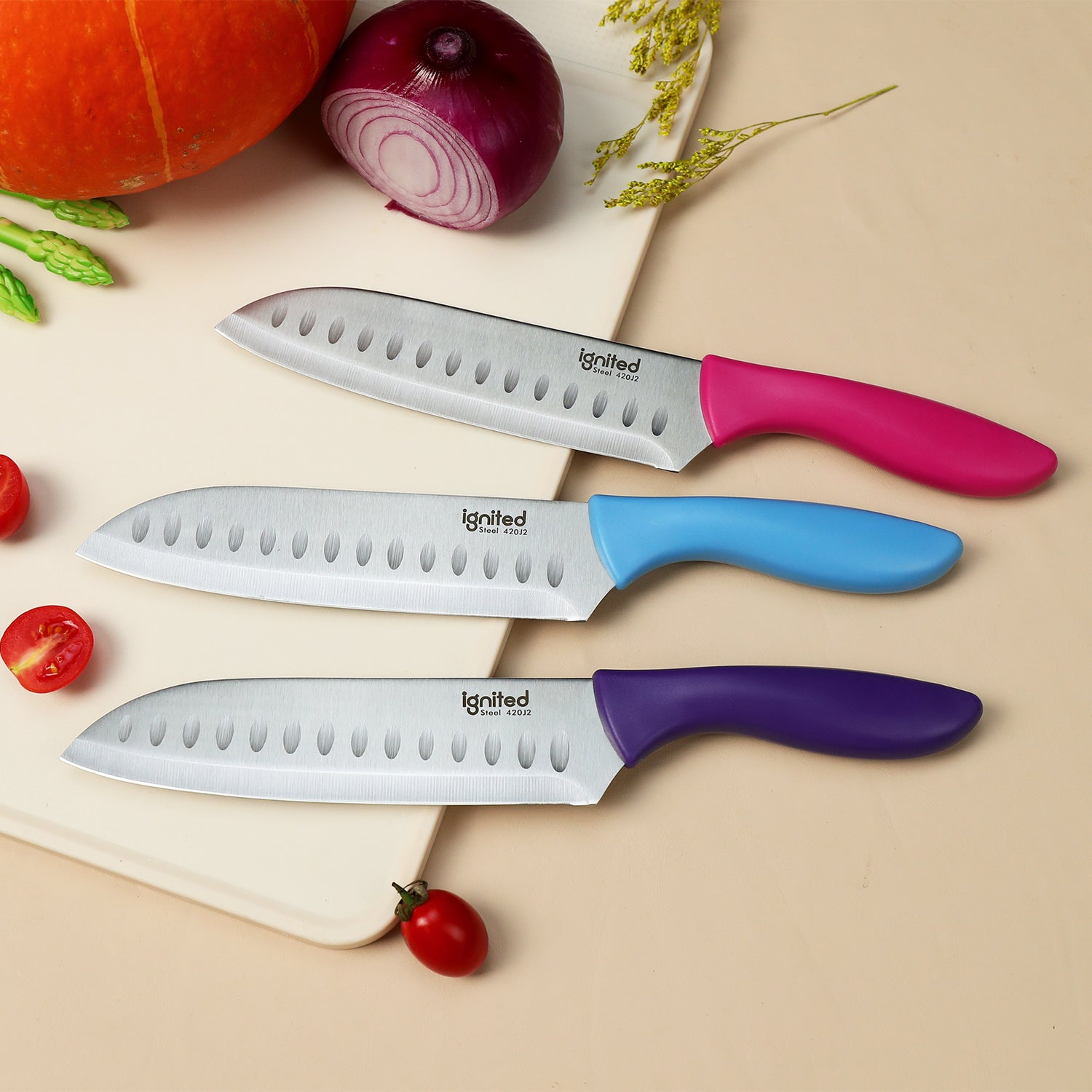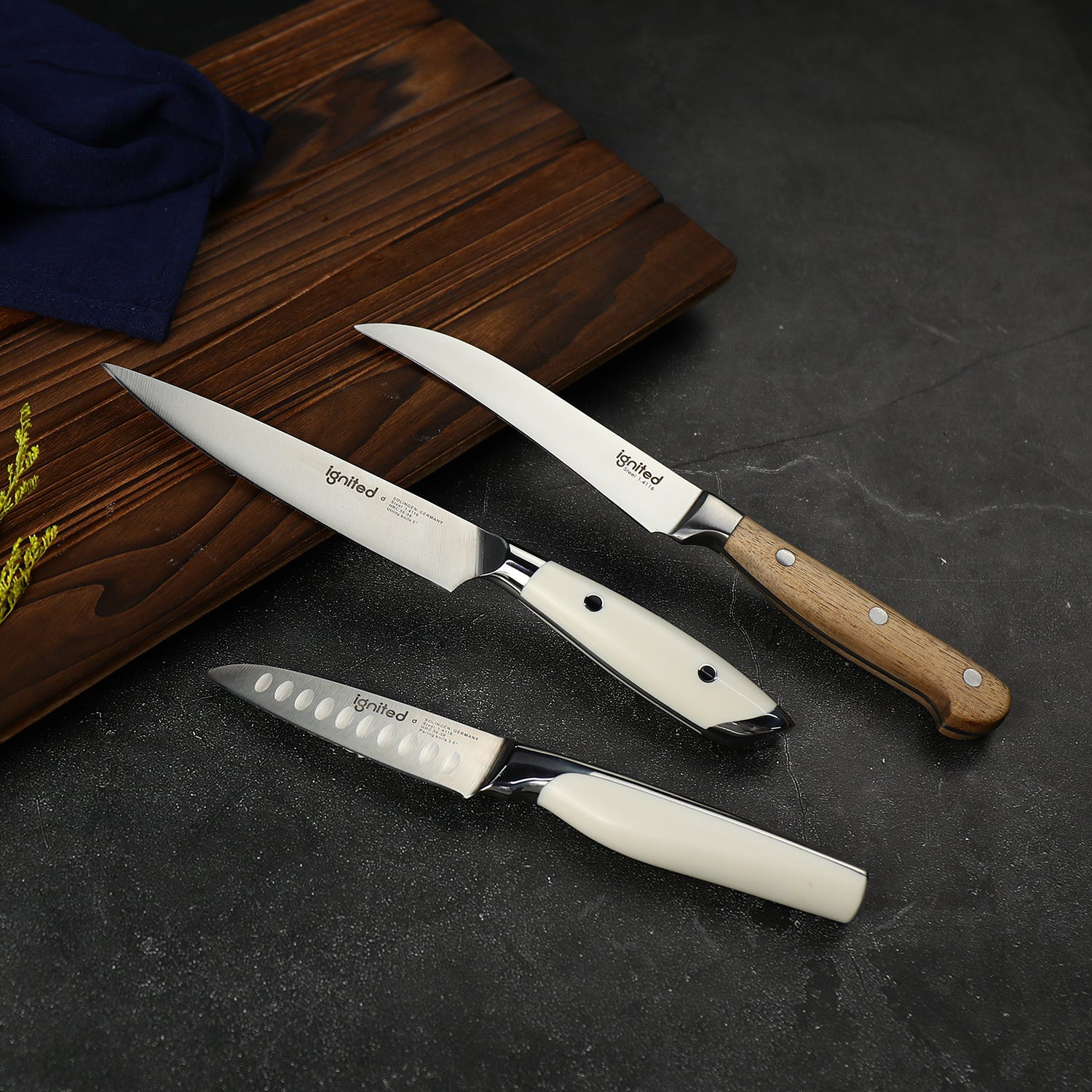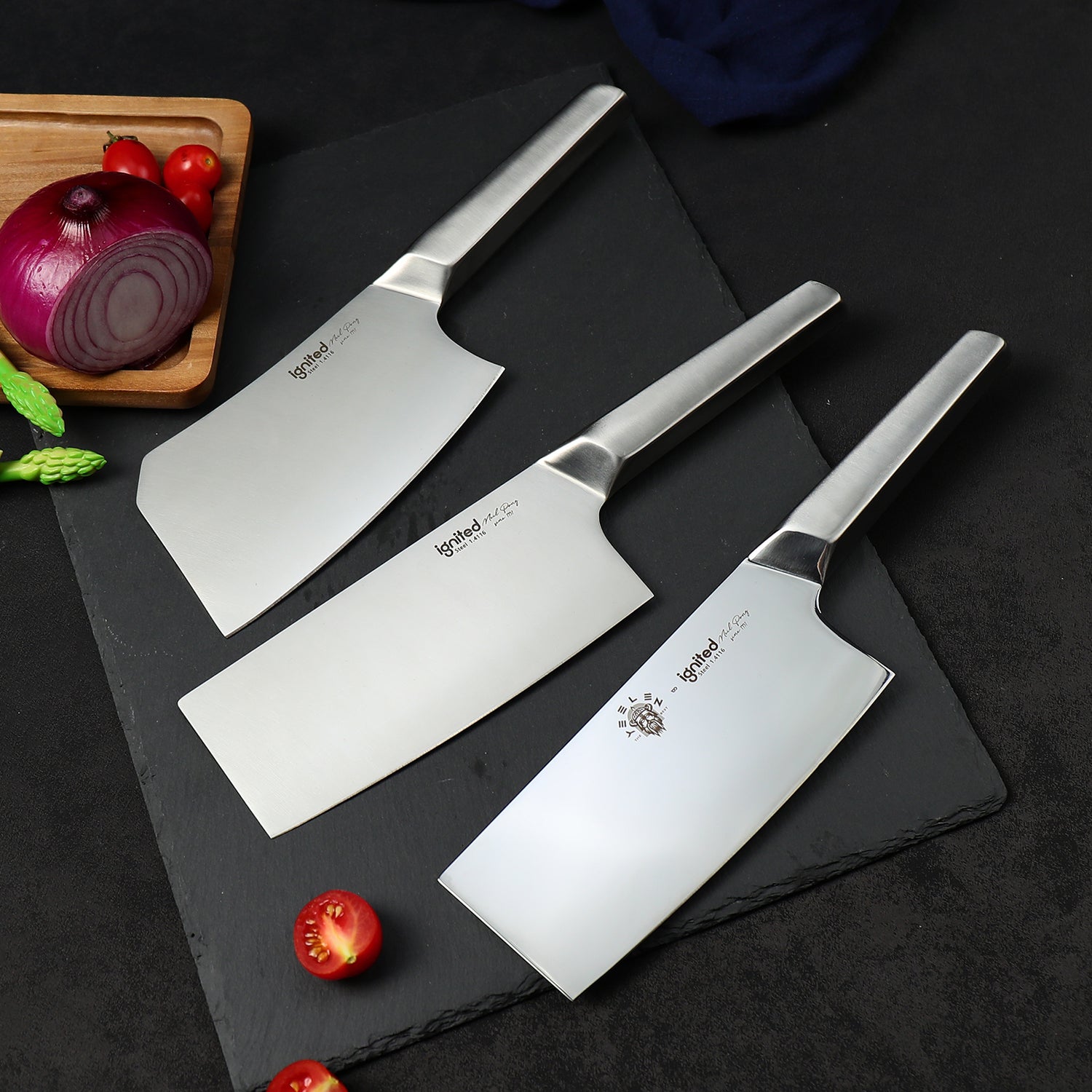Rust on kitchen knives is more than a cosmetic issue—it can impact performance, safety, and food hygiene. Understanding why some knife sets rust faster than others and how to prevent it is essential for both home cooks and professional chefs. This guide from Ignited Cutlery will explain the materials, conditions, and maintenance habits that contribute to rust, and how you can keep your knives in top condition.
Content Menu
Understanding Rust: The Science Behind the Problem
Rust is the result of iron oxidation, triggered when steel is exposed to oxygen and moisture. Though many knives are marketed as “stainless,” no steel is entirely rust-proof. Factors like salt, acid, and improper storage accelerate rust formation by breaking down protective chromium oxide layers on the blade.
Knife Materials: Which Are Most Prone to Rust?
- Stainless Steel: Contains chromium for corrosion resistance, but still susceptible if not properly dried.
- High Carbon Steel: Offers excellent sharpness but rusts quickly without oiling and care.
- Ceramic: Rust-proof but fragile; ideal for soft foods only.
- Titanium: Corrosion-resistant and lightweight, but rarely used in professional-grade chef knives due to edge retention limits.
Common Causes of Rust in Knife Sets
- Leaving knives wet after use
- Cleaning knives in the dishwasher
- Storing in humid drawers or wet sheaths
- Cutting acidic or salty foods without immediate cleaning
- Using low-quality or improperly alloyed steel
How to Prevent Knife Rust: Comprehensive Strategies
- Hand wash and dry knives immediately after use
- Avoid dishwashers at all costs
- Store knives in a dry, ventilated space (knife block, magnetic strip, or sheath)
- Apply food-safe oil regularly (especially for high carbon steel)
- Use wooden or plastic cutting boards
- Inspect knives regularly and remove rust early
Step-by-Step: Removing Rust from Your Knives
- Wipe off surface moisture with a soft cloth
- Apply a baking soda paste or rust eraser to the affected area
- Gently scrub with steel wool or sponge
- Rinse and dry thoroughly
- Apply a thin coat of mineral or camellia oil
Advanced Knife Maintenance Tips
- Use silica gel packs or dehumidifiers in humid kitchens
- Wipe knives during heavy prep involving acidic ingredients
- Use blade guards during transport
- Don’t let knives soak in water—even for a few minutes
The Role of Knife Construction and Finish
- Forged vs. Stamped: Forged knives are denser and resist rust better
- Blade Finish: Polished finishes help repel water more effectively than matte
- Handle Materials: Water-resistant handles (e.g. G10, resin) are better than untreated wood
Myths and Misconceptions About Knife Rust
- “Stainless steel can’t rust” – False; it resists rust but still requires care
- “Dishwashers are safe” – False; they trap heat and moisture
- “Expensive knives don’t rust” – False; many premium knives use carbon steel
- “Only carbon steel needs oiling” – False; all metal benefits from added protection
Troubleshooting: Persistent Rust Problems
- Check for excess humidity in your kitchen or knife drawer
- Test your water source (hard water may leave mineral residue)
- Consider upgrading to rust-resistant steel like German 1.4116 or Japanese AUS-10
The Environmental Factor: How Climate Affects Knife Rust
Homes in coastal areas or regions with high humidity will see faster rust development. If this describes your environment:
- Oil knives more frequently
- Keep knives in sealed drawers or airtight containers
Knife Rust and Food Safety
Surface rust is not typically dangerous, but deep rust pits can harbor bacteria and compromise the knife’s structure. Never use severely corroded knives for food prep. Always clean and treat rust promptly.
Conclusion
Rust is a preventable issue with the right care, awareness, and materials. At Ignited Cutlery, we design knives that balance performance with durability—including rust resistance—so you can cook confidently. Choose quality materials, follow proper cleaning practices, and your knife set will remain as sharp and beautiful as the day you bought it.
FAQ: Knife Rust Prevention and Care
Because “stainless” means rust-resistant, not rust-proof. Without proper care, rust can still form—especially near the edge or tang.
No. Dishwashers damage blades and handles and promote rust. Always hand-wash and dry immediately.
Food-grade mineral oil, camellia oil, or specialized knife maintenance oils are ideal.
Use a mixture of baking soda and water or a rust eraser. Gently scrub the affected areas, rinse, dry, and oil the blade.
Because many premium knives use high-carbon steel for performance, which rusts faster than cheap stainless alloys. More performance = more maintenance.




